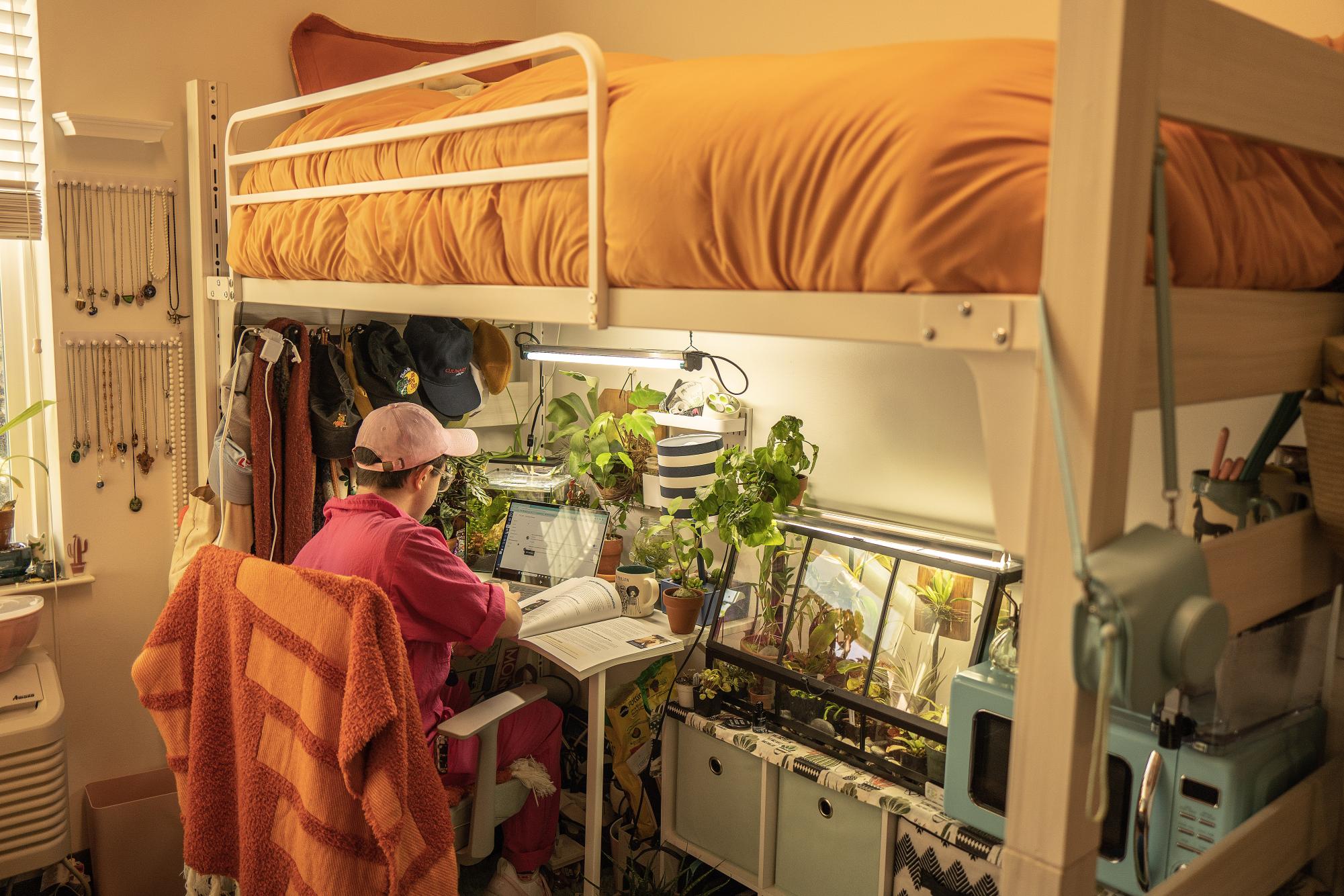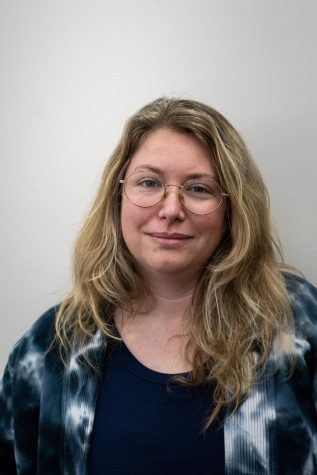When most Santa Rosa Junior College students snail through evening Highway 101 traffic, Jayce Kaldunski strolls through the dormitory hallway of Polly O’Meara Doyle Hall with his pink, Paris Hilton pan set and dinner ingredients stacked in his arms. To the left of him, explosions reverberate from the jumbo-screen TV in the recreation room, and above him, pool balls clack followed by a sharp “Yes!” A chorus of murmurs from myriad conversations echo from open suite doors. As he enters the communal kitchen he sees a student carefully removing a steaming pan of brownies from the oven, another straining Thai noodles over the sink and a couple folding soft tacos around shredded beef.
He lays his burden on the counter and thinks to himself, “This is me going off and doing the college thing.”
Kaldunski, an 18-year-old special education major, once worried he would miss out on the dorm-life experience when he thought of attending SRJC instead of a four-year institution. He grew up in Placerville, three hours from Santa Rosa, and had his eye on SRJC in high school; his extended family lives in Sonoma County and he has visited the area since childhood. When he learned about the new dorm, he jumped on the opportunity even before applications opened this January.
“I would go on the webpage every single day, refresh, refresh, refresh, waiting for that application to come out,” he said. “The dorms were a big deal for me coming here.”
The new SRJC dormitory promises students affordable housing, a community-building hub and a more immersive college experience than most two year schools offer.
Back in 1965, SRJC became one of California’s first community colleges with student housing when it opened the Kent Hall dormitory. The college demolished the dorm in 2003 to make space for more faculty offices, which became Analy Village, according to Kris Shear, the former Kent Hall manager. The new Polly O’Meara Doyle Hall offers housing for 352 students, almost five times the 72 students once housed in Kent Hall. Even today, only 12 of California’s 116 community colleges offer student housing.
Quite the social butterfly, Kaldunski immediately began talking to people and making friends in the dorm. He said he loves exploring Sonoma County and never has trouble finding someone to join him.
“There’s always someone going to Bodega Bay,” he said. “We pretty much go to the city, San Francisco, every weekend. And there’s so many downtowns near here: Windsor, Petaluma, Santa Rosa. Each one has their own little food shops and stuff. Coming from Placerville in El Dorado County, there was like one downtown.”
A semester highlight for Kaldunski was seeing “The Rocky Horror Picture Show” at Petaluma’s Phoenix Theater in October with dorm friends. All that month, Halloween vibes permeated the dorm as some of the residents, Kaldunski included, decorated the outside of their doors with pumpkins and skeletons. He plans to decorate for Christmas as well.
The 95,218-square-foot Polly O’Meara Doyle Hall has four stories, each with dorm rooms, kitchens and study areas. The first floor has a main lobby and common area with a big-screen TV, and the second floor has billiard and foosball tables. Basketball courts sit right outside the building.
Kaldunski said the recreation areas are usually busy, but his favorite place to socialize may be the kitchen.
“The more people cooking the better, because then it turns into hanging out,” he said.
In addition to studying physical education, Kaldunski is in the SRJC culinary arts program and likes to teach other residents how to cook new foods. He said some students are still learning how to be on their own, and he even had to teach a friend the intricacies of cooking eggs.
While Kaldunski sees the dorm as offering a more immersive college experience, for some students, dorm-life is a chance to live among new people. Second-year SRJC student and math major Crimson Diggs, 22, whose pronouns are they/them, said the social aspect of dorm life is a huge contrast to being homeschooled through high school.
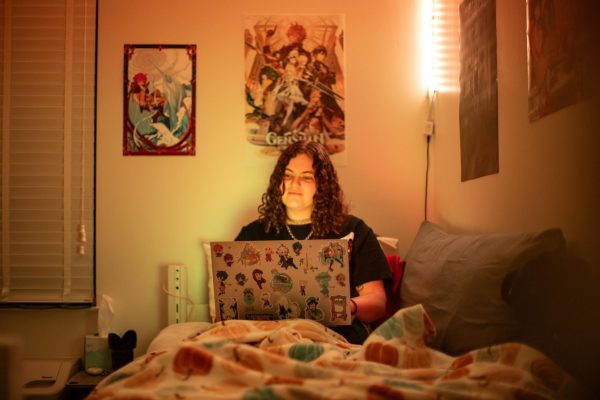
“There’s a lot more exposure to other people than before I lived on campus,” Diggs said. “I’ll just be running to the bathroom real quick or washing my dishes and bump into someone and have an entire conversation. This has kind of forced me to overcome my social anxiety, or at least try to work on it [and] to put myself out there and make friends.”
Another perk of living in the dorms is the convenience of hosting non-dorm SRJC friends anytime they are on campus, Diggs said.
Before moving into the dorm, Diggs lived in Sebastopol with their grandmother. Besides cutting their commute to campus, the dorm offers Diggs a more affordable way to live on their own since electricity, heat and water are included in the rental costs.
“It’s nice to be on my own and be able to afford a place that’s really, actually mine,” they said.
Diggs lives in a single suite and said there is plenty of room without needing to maximize space to make the area livable. They have their own microwave, mini fridge, rice cooker and electric griddle; they prefer to cook in their room instead of using the communal kitchen.
“[I cook in my room] mostly because I don’t have a lot of utensils to cook with and also because there could be a lot of people in there, which kind of stresses me out,” Diggs said. “I get creative. I’ve made scrambled eggs in the microwave and soup in the rice cooker.”
When they do use the kitchen on the first floor, it is usually clean, they said. This is most likely because of one resident who often cleans dishes for the floor. “I hear the other floors are pretty bad when it comes to dishes,” they said.
One issue Kaldunski, Diggs and other students complain about is the lack of ventilation in the dorm’s four kitchens because the windows don’t open. Smoke buildup from students cooking has set off the fire alarms at least five times this semester, with three times in one particularly bad week. When this happens, every dorm resident must leave the building until the smoke clears, which usually takes a half hour.
By now Diggs has gotten used to frequent fire alarms.
“I’m just glad it hasn’t gone off while I’m in the shower,” Diggs said. “One [alarm] lasted for a whole hour. They had to remove the oven from the fourth floor.”
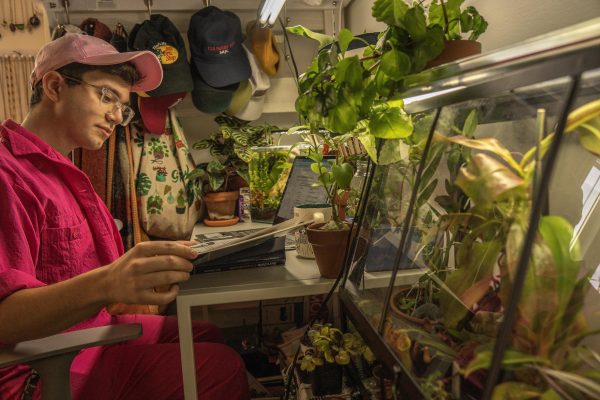
Despite the progress Diggs has made in becoming more comfortable in social settings, they have realized some drawbacks to living among so many other students, such as residents not respecting quiet hours, nor each other’s property.
“My friend had a skeleton on her door, and someone took it and broke its legs,” they said. “So when I put up my decorations, I had a ghost with legs sticking out and I hooked it from the inside so it couldn’t be ripped off, but someone still ripped off the legs and left them in front of my door. Kids being immature. It’s just frustrating.”
Another issue is insufficient parking. Diggs said the dorm’s parking lot doesn’t hold enough spots for residents, who then try to park in Lark Hall parking lot on the dorms’ east side, which also fills up fast.
“What really sucks is when I go out and grab lunch at 1 p.m. and then I come back and the dorm lot is completely full, and then the other one is completely full too, so I’m like, ‘Well, I guess I have to park on the other side of campus to get to my own home,’” Diggs said.
Kaldunski’s main grievance with the dorm is the lack of available laundry machines. The only laundry room for the 352 students is on the second floor, and the 10 machines quickly get backed up. He’s overcome this problem by doing laundry at 4 a.m., but is aware that other residents may not have that option.
“The problem is when people will take your stuff out of the dryer before it’s done, and stick your wet clothes on top of the dryer,” Kaldunski said. “I’ve had friends who have had their wet clothes taken out of the dryer and then thrown on the ground, and then it gets covered in dirt and they have to rewash them, but there are no washers open.”
He also thinks the dorm should have more cabinets with hygienic products, like toiletries and period products, for students who need them.
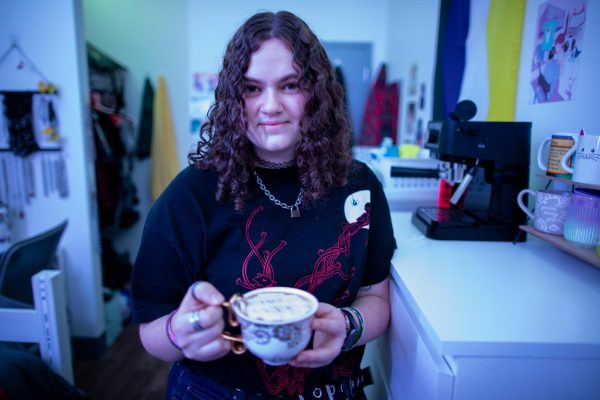
There are also students, like Hope Peoples, who chose the dorm more for the affordable price than social opportunities.
Polly O’Meara Doyle Hall rent ranges from $990 per month for a standard dorm with a roommate to $1,240 per month for a single dorm to $1,550 per month for a two-bedroom, two-bath single. This approaches half the average rent of a one-bedroom and two-bedroom apartment in Santa Rosa, which is $2,318 and $2,752 respectively, according to Rent.com. The dorm also has four apartments with two single and two double bedrooms with two bathrooms.
Peoples, 18, chose SRJC for its dental hygiene program, which is ranked seventh in the state.
“If I didn’t get into the dorm, I wouldn’t be able to go to school here. I knew I couldn’t afford anything else,” Peoples said.
She traveled to SRJC from Crescent City with a friend from high school who also enrolled in the dental hygiene program. They requested to live with each other on the dorm application and are now roommates.
Besides her roommate, Peoples has made other friends in the dorm and said it have been essential to forming a social circle. “I have met people in my classes, but none who I hang out with outside of class,” she said.
One of her dorm friends is Kaldunski. Peoples said the move-in process for the dorm was awkward, “No one was talking to each other.” However some students, like Kaldunski, put in the effort to make it social. “He was knocking on people’s doors, talking to everybody,” she said.
In half a semester, Kaldunski has moved from being a resident in the dorm to a resident advisor, or RA. RAs get their rent covered and, since he was approved for the California College Promise Grant, which provides free tuition for the first two years of community college, Kaldunsai is able to attend SRJC practically free.
RA Brin Searey, 21, a second-year business major, started working for Servitas, the dormitory housing developers, in January. She said her position allows her to help other students. It also provides networking opportunities.
“I love this place – the college culture and meeting people from all over,” Searey said.
Along with the other RAs, she has been running icebreaker events to help the students get to know each other.
“We threw game nights with UNO and Twister, a bracelet-making night and a graffiti night where people wore white T-shirts and painted each other,” she said. “Now things are settling in. Everyone may not know everyone, but they all recognize each other.”
In addition to icebreakers, Searey said she would like to plan study sessions for the whole dorm.
When Kaldunski became an RA, he had to move from his first floor dorm room to a new unit on the fourth floor. Since his move, he’s learned students interact with each other more on the lower levels.
“The hallway lights are motion activated,” he said. “I had no idea about that when I lived on the first floor because they were always on. I guess because there’s always some people outside talking or doing something. The fourth floor actually gets dark.”
Robert Ethington, vice president of student affairs, said he is currently working with Servitas on a solution to mitigate the issue with fire alarms. He is also working with Polly O’Meara Hall management to use the dormitory camera system to tackle problems with student property damage.
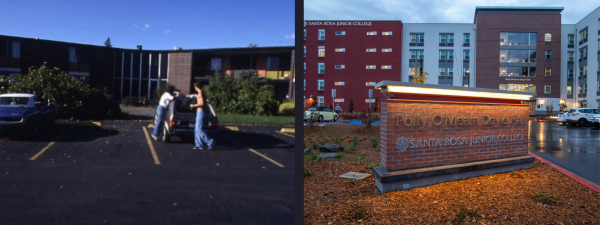
The Kent Hall dorm was an integral part of the SRJC community for 38 years. Polly O’Meara Doyle Hall still has some growing pains to work through in its first year, but residents are settling in, and, if successful, it may lead to more SRJC student housing and a new era of community-building in the Santa Rosa Junior College neighborhood.
Erina Corl contributed to this reporting.




